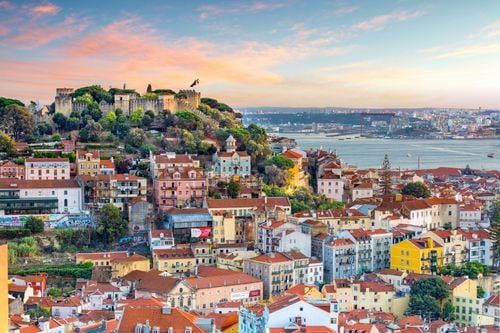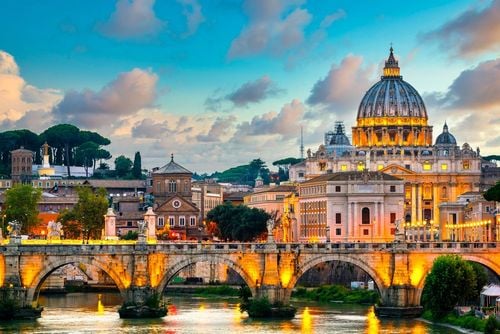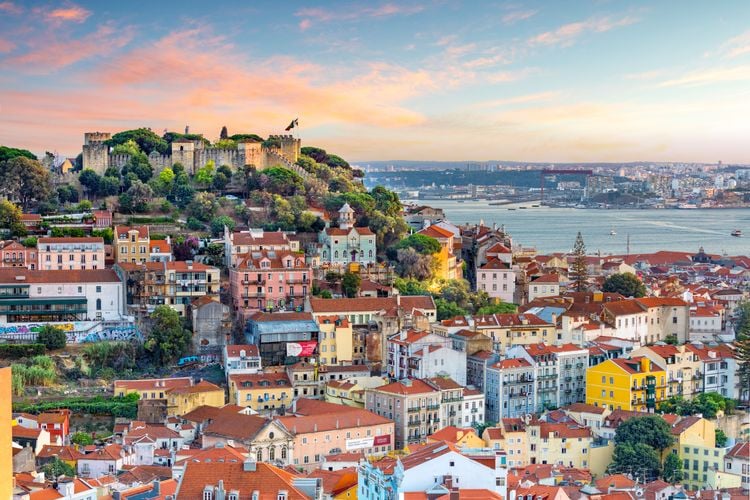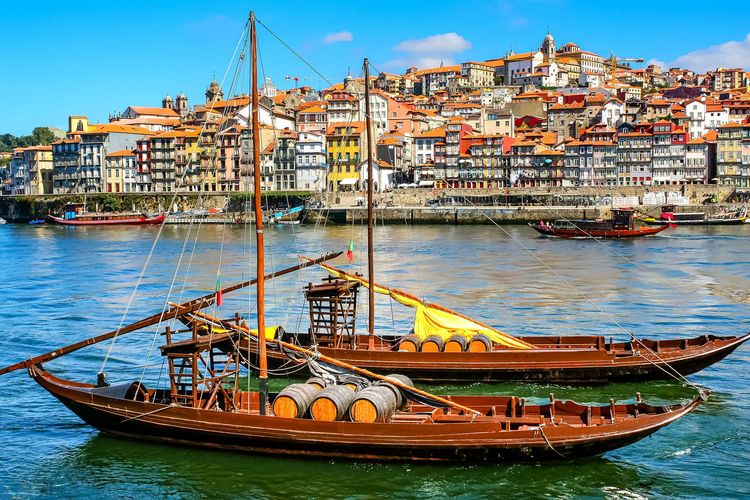Portugal, a small country with great promise

This small country on the western edge of the European continent has been attracting tourists from all over the world in recent years. Portugal is only one-sixth the size of France, but it still has a lot to offer. Beautiful beaches, cultural and historical sites, typical little villages and charming towns - that's just a taste of what you can discover when you visit Portugal. Culturally southern, don't be fooled by its Mediterranean pretence: Portugal is oceanic, always turned towards the Atlantic, full of beautiful colours and fantastic landscapes, sometimes also quiet and melancholy, lulled by the rhythms of the fado.

A streetcar through the colorful streets of Lisbon.
- © Olga Gavrilova / ShutterstockWith its mild winters and sunny summers, Portugal is a pleasure to visit all year round. Its capital Lisbon has many assets that have made it one of Europe's favourite city-trips. With its gentle ocean breezes, it is the figurehead of the entire country, showcasing its rich historical heritage while looking to the future. Lisbon is one of Europe's most dynamic capitals.
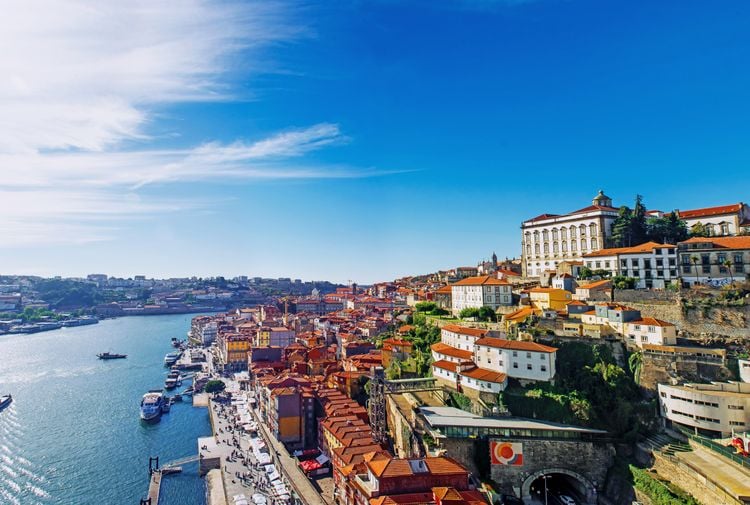
Porto
- © artem evdokimov / ShutterstockBut its popularity is gradually being matched by the charming city of Porto. Overlooking the Douro, this beautiful northern city has a character all of its own, like the old Ribeira quarter and its colourful houses. This is where Port wine is produced, and its famous eponymous aperitif can be tasted in one of the many cellars in the Vila Nova de Gaia district.
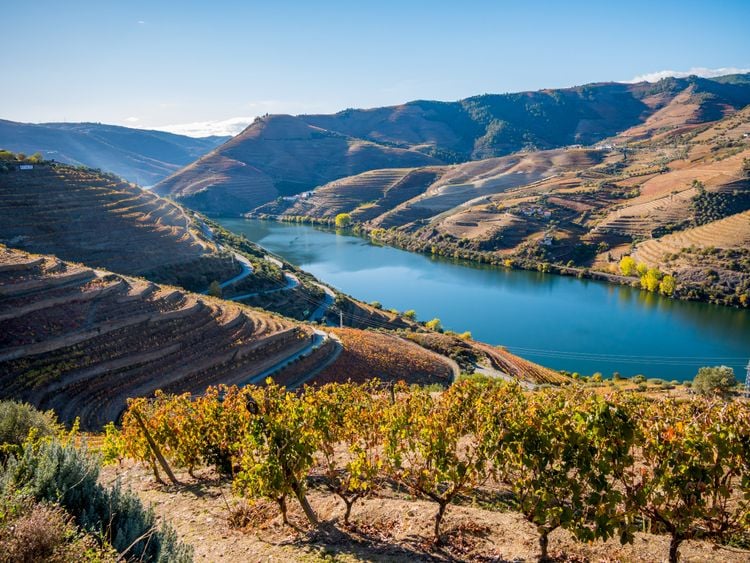
Upper Douro Valley
- © patrik-polasek / ShutterstockA city, but also an entire region to explore: along the Douro, the vine-covered landscapes that have been worked by man for centuries are among the most endearing in the country. The beautiful countryside, as well as the Serra da Estrela mountain range, are all to be found on the roads of the Central region, which boasts a host of Unesco-listed sites: Coimbra, Tomar, Alcobaça, Batalha...

Marvao Castle in the Alentejo
- © Sopotnicki / ShutterstockAnother region, the largest in the country, theAlentejo is essentially made up of vast agricultural plains dotted with charming little villages, medieval castles and ancient monasteries. Still little-known by tourists, the Alentejo remains authentic and wild. A hiker's paradise, there's plenty to linger over for an entire trip.

Nazaré
- © J. Waleson Photo / ShutterstockHowever, we mustn't overlook the immense Atlantic coast, dotted with beautiful beaches and a number of famous surfing spots: Nazaré, Peniche, Ericeira, the beauty of these seascapes extends to the beaches of the Sétubal and Comporta peninsulas, where Lisboans take refuge at weekends.

Marinha beach in the Algarve
- © DaLiu / ShutterstockThe coastline is truly spectacular in the splendidAlgarve region, from Faro to Sagres, alternating large sandy coves and sea-beaten cliffs in the very south of Portugal: magnificent in every season!

Madeira
- © Mertens / ShutterstockOur gaze then turns to the open sea and the splendid islands of Portugal, confetti scattered across the immensity of the Atlantic. The Azores, always discreet, still boast unspoilt nature, as does the increasingly popular island of Madeira, where the scenery is as much a pleasure for the body as it is for the mind. Of volcanic origin, these archipelagos are real treasures for lovers of botany and hiking.
For such a small country, it's easy to see that Portugal is full of promise, with the prospect of numerous trips to the shores of the Atlantic: this is a destination that's always on a roll!
Gastronomy in Portugal
Portuguese gastronomy is extremely rich and varied. It is considered to be one of the most eclectic in the world, thanks to its many influences (Moorish, Iberian, African, Indian). Portugal was one of the pioneering countries in the quest for the spices of the East India route, and these can be found in many local dishes. A Portuguese meal generally consists of a soup or salad as a starter, followed by a meat or fish dish.
Portugal's emblematic fish is of course cod(bacalhau), and it is said that there are as many ways of preparing it as there are days in the year! You'll also find sole, skate, squid, tuna and, of course, sardines. They are generally eaten grilled, stewed or in caldeirada, a kind of bouillabaisse, and even as a dessert or for breakfast!

Pasteis de bacalhau, a fried cod cake
- © Tupungato / ShutterstockMeat is not to be outdone either, and the Portuguese are particularly fond of pork. The most famous dish comes from the Alentejo region in the south: the emblematic carne de porco alentejana, made from pieces of pork fillet cooked with spices (coriander), lard, red pepper berries, garlic and olive oil, stewed with clams. In the north, the typical soup is caldo verde, made with potatoes and cabbage, sometimes accompanied by chorizo.
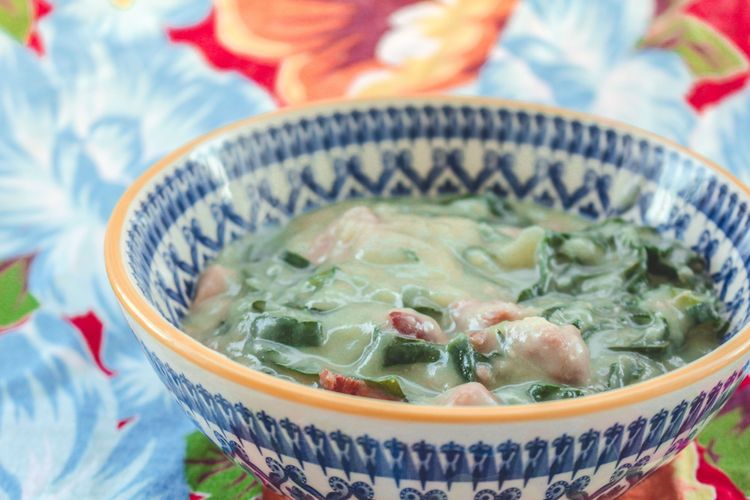
Caldo Verde, a typical Portuguese dish
- © CamillaFlorez / ShutterstockFor those with a sweet tooth, rest assured that the Portuguese are also very fond of desserts and other pastries. Each region has its own culinary treasures to end a meal on a high note. Desserts are often fruit-based, often flavoured with spices such as cinnamon. The famous pastéis de nata are also well known.
Portugal is also renowned for the quality of its wines (particularly the reds). The most famous are, of course, port wine, made in the town of the same name, and Madeira wine, produced in... Madeira.
Last articles

Portugal's best waves
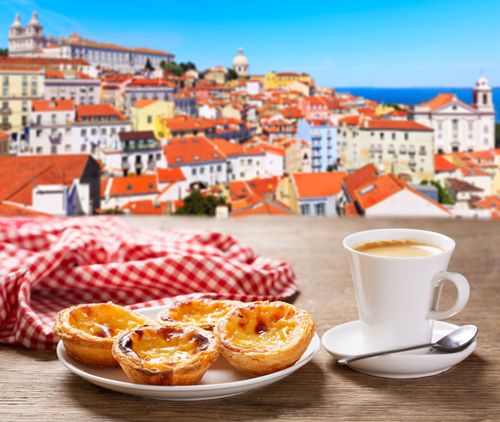
2 weeks to explore Portugal from north to south

The most beautiful beaches in the Algarve

1 week in the Algarve, Portugal
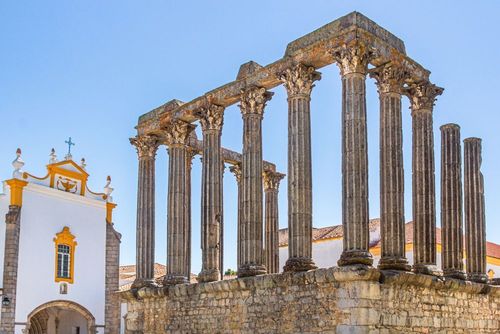
A 3-day itinerary of historic towns and the natural beauty of the Alentejo

Walking, mercado and historic monuments in Portalegre

Where to travel in March?

An ideal itinerary for a weekend in Faro

Are you a Harry Potter fan? Discover the city that inspired Hogwarts’ uniforms: Porto.
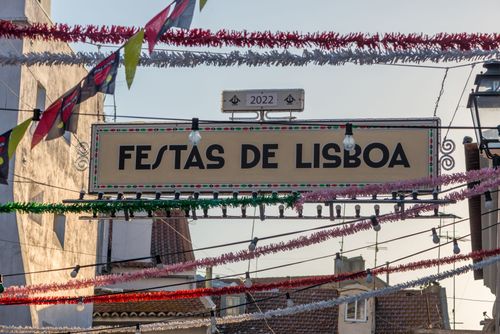
The Lisbon festivities, the spring rendezvous organised with great pomp and ceremony!
The must-sees
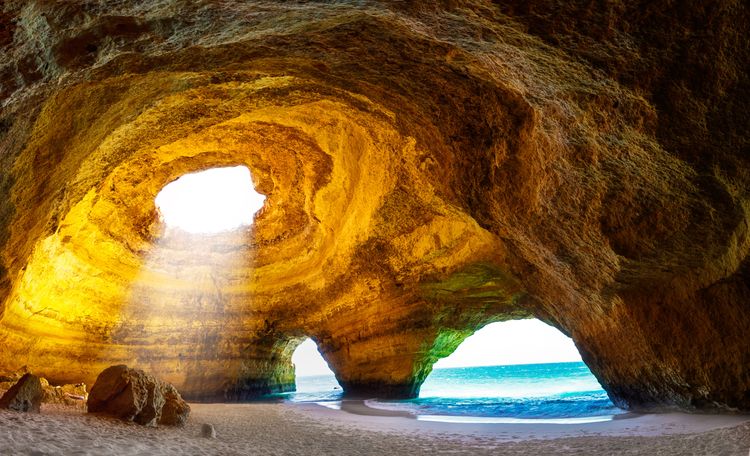 1
1
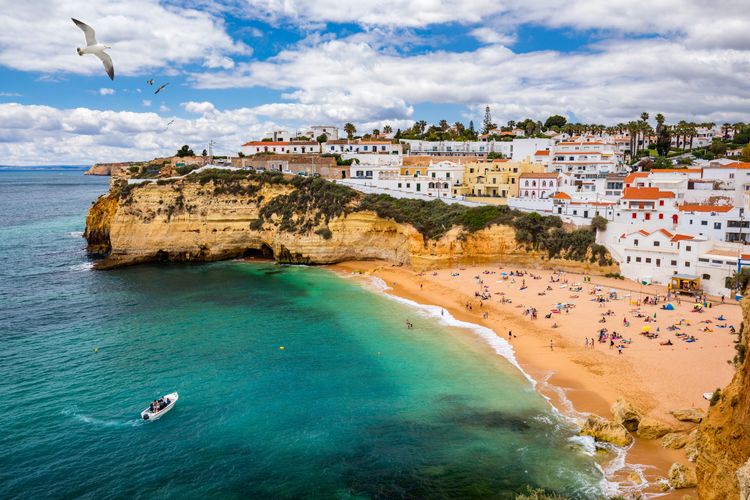 2
2
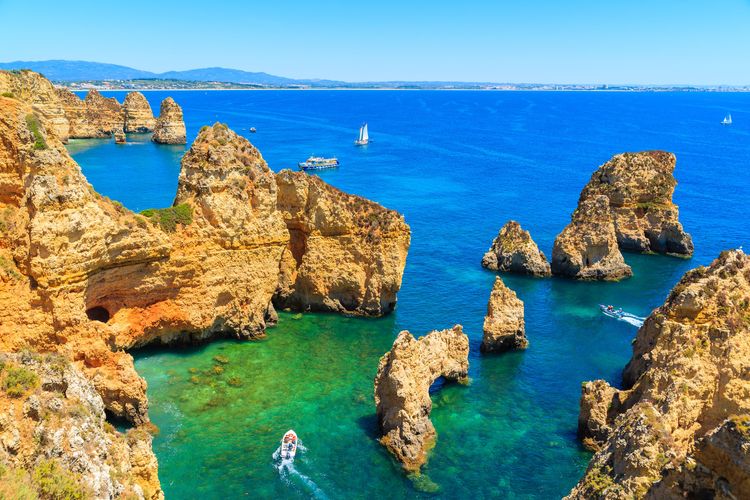 3
3
 4
4
 5
5
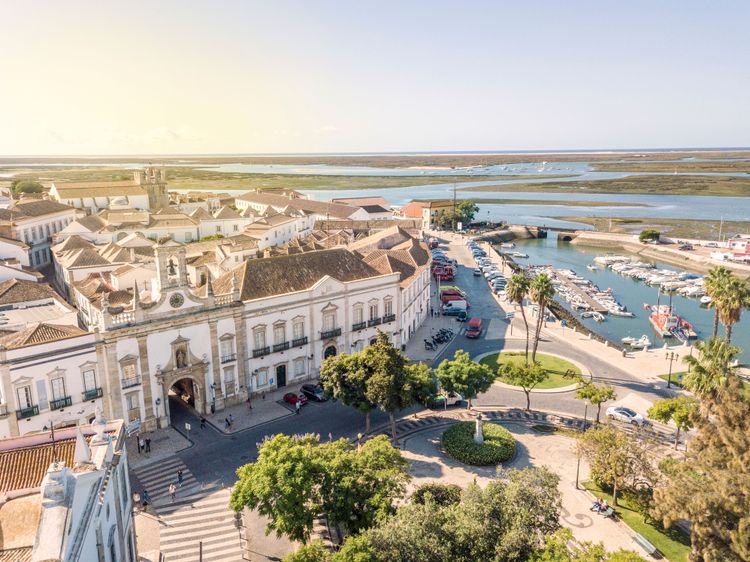 6
6
 7
7
 8
8
 9
9
 10
10
How to get there?
Portugal is an ideal destination for both short breaks and longer stays. The country is well served by numerous airlines, including low-cost carriers: the main routes from France take you to Lisbon, Porto and Faro (Algarve), as well as directly to Madeira.
Where to stay?
In tourist areas and major cities, there is a wide range of accommodation on offer, and it's fairly inexpensive.
Campsites and youth hostels are perfect for those on a budget, and then the options move upmarket with homestays, rentals and traditional hotels. In the countryside, you can always find a gîte, a small rural hotel or an agroturismo.
Pousadas are very upmarket state-run establishments with an exceptional history or location.
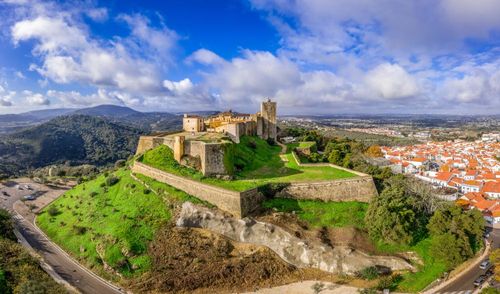
Practical information
When should you go to Portugal?
Portugal's oceanic climate is mild all year round: it's hot in summer, but never stifling on the airy coast. As is always the case by the sea, August is the peak tourist season. Spring and autumn are two particularly pleasant seasons. In winter, Portugal and its islands are a haven from the cold. In short, Portugal is a year-round destination.
What are the formalities for travelling to Portugal?
Portugal is a member of the European Union and the Schengen Area. All you need is proof of identity (identity card, passport) for any checks that may be carried out.
Time difference in Portugal
There is a 1-hour time difference between France and Portugal: when it is 12pm in Paris, it is 11am in Lisbon.
Portugal: what to bring back
Traditional crafts are highly developed in Portugal. The most emblematic object is undoubtedly the azulejo, a coloured polished stone tile. Always blue in colour, these famous tiles, assembled in gigantic frescoes, cover the walls of many buildings throughout the country. If Portugal is nicknamed "the blue country" first and foremost for its ocean and ever-blue skies, it is also and above all thanks to this art azulejaria which can be found from north to south.
The Alentejo is considered one of Portugal's greatest craft regions. Wooden furniture, carpets, sculpted objects and cork crafts make up a large part of what you can bring back from Portugal, if you have enough room! Madeira is rightly considered a Mecca for embroidery, lace and basketry. However, these three crafts are also found in other regions of the country.
Budget in Portugal
The cost of living in Portugal is fairly attractive. You can treat yourself to an excellent meal in a Michelin-starred restaurant for around thirty euros.
It's also ideal for shoppers, with all the big brand names to be found in Lisbon, as well as small designer boutiques at much lower prices than in France. What's more, many craftspeople still work in Portugal. You'll find quality shoes and gloves, for example. So a word of advice: leave with an empty suitcase and fill it up as you go shopping.
Transport in Portugal
Hiring a car is still the most practical way of exploring Portugal, but there are other alternatives. The train (CP - Comboios de Portugal) runs efficiently around the major cities, linking Lisbon with Coimbra-Guarda, Porto and Faro. However, the bus is often the most practical means of transport: the network is dense, departures frequent and the vehicles comfortable (e.g. Rede Expressos).
Sports fans will find plenty to indulge their passion in Portugal. Golfers will find themselves in the Algarve, while kite surfers, surfers and windsurfers will find themselves on the Atlantic coast north of Lisbon.
explore Try out our comparators
It is Easy to travel
Linked destinations

